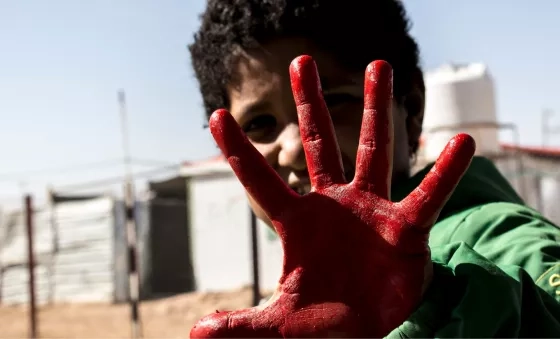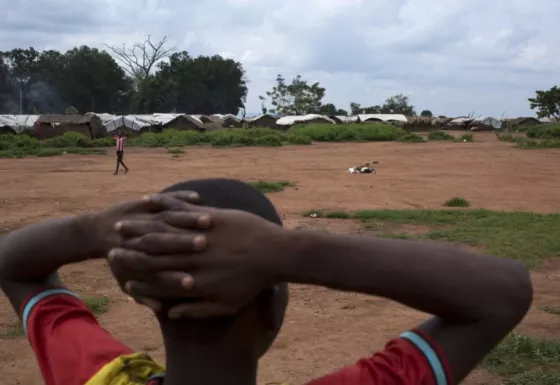"I used to live in Bambari and go to school. I was happy. The militia attacked when I was at school. I was told to go home.
My family was hiding so I hid with them. They kicked down the door and forced their way into the house. My brother resisted so they grabbed him and dragged him outside the house.
They made him sit down—and executed him.
My mother cried out and attacked the soldier who shot my brother. So they tied her up and killed her too.
The moment my mother died is when things went wrong. I had to take things into my own hands.
I joined an armed group for protection and to avenge the death of my mother and brother. Only when the French army came to disarm us, that's when I put my gun down.
They told me, You're too young for this.
They brought us to the IDP [internally displaced people] camp. Life is very different here.
When I see other kids playing football, I have to join them. I love football.
I am happy to come to the War Child centre here. I can forget my troubles for a while.
One day I would like to have a family and a house."
How War Child helps
Our projects aim to reduce the psychological impact of children's experiences by providing safe spaces where they can play, learn, develop life-skills and thrive with other boys and girls.
We also ensure that children are supported back into education, either in schools or through accelerated learning programmes. Older children are also given vocational or work skills training, to present them with future opportunities.
Children who have been associated with armed groups, often face stigma and rejection. We work with communities, families and teachers to ensure that children are accepted back into their communities and supported to be children again


